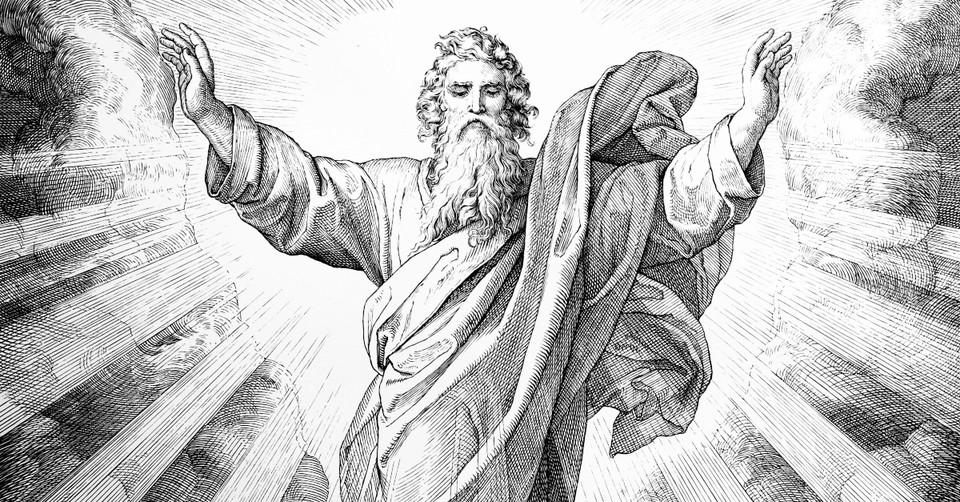Is God the Same in the Old and New Testaments?

Growing up, Old Testament stories were my favorites. Daniel in the lion’s den. David and Goliath. Joshua and the battle of Jericho. Moses and the burning bush. The crossing of the Red Sea. Gideon and his small army of 300. The sun standing still. Shadrach, Meshach, and Abednego in the fiery furnace. Those stories came alive for me through colorful illustrations in picture books read to me before I could read, flannel-graph stories in Sunday School, and a pastor who preached much about the Old Testament.
Coming to Christ as a young child, my faith was built on a God who could do miraculous and supernatural things. Later, as an adult, I began to discover why those stories meant so much to me; God gave me the spiritual gift of faith. As a result, I never questioned that the God I read about in the New Testament was any different than the one I grew up on in the Old Testament.
For others, that may not be the case. If you were introduced to faith in God only through New Testament scriptures, the Old Testament may come as a shock. Read in its entirety, (not just the exciting highlights), we discover things about God that are harder to understand. Why did He allow slavery? Why so much emphasis on animal sacrifice? Why couldn’t the Jews marry other cultures? Why was polygamy acceptable? How could God strike down thousands of His people for their sin? What was the point of all those laws, covering everything from what you ate, what kind of material your clothes were made of, and who you could marry?
In the New Testament, we view God through the lens of His mercy and grace in sending His Son, Jesus, as the perfect sacrifice, to rescue us from sin and death. We see love and redemption so clearly at the cross. Jesus is made like us, in human flesh; we can relate to Him in some fashion, even though He was God. How can this be the same God of the Old Testament? We like Jesus, but we’re not quite sure about the God who demonstrates His wrath so effectively against His enemies.
How do we reconcile the different pictures of God presented in the Old and New Testaments? Here are three truths to consider.
One Imperfect Story
The entire Bible tells one story. The Word is perfect and true, but the story it tells weaves its way through imperfect people. Bible scholars have interpreted God’s revelation and dealings with humanity in distinct periods, known as dispensations or covenants. These are concepts for another article, but basically, God has unfolded the history of mankind in a sovereign way to move us along to His intended purposes. Each stage reveals more of His plan, as well as more of Himself, and will ultimately end in a redeemed people worshipping Him for eternity in the new heavens and new earth.
From the beginning of the Old Testament to the end of the New Testament, God is telling one story, the true account of a sovereign, righteous God redeeming imperfect people. Miraculously, it was written by 35-40 different authors over a period of 1500 years. It is a collection of 66 books, all without error, and all without contradiction, despite man’s finite mind which is unable to reconcile some of its deeper truths with our limited, human perspective.
New Testament scriptures help us to understand the Old Testament. Hebrews 1:1-3 shows us that the same God was speaking at all times:
“God, after He spoke long ago to the fathers in the prophets in many portions and many ways [i.e., the Old Testament], in these last days has spoken to us in His Son, whom He appointed heir of all things, through whom also He made the world [i.e. the life of Jesus as told in the New Testament].”
John 1:18 says it even more succinctly: “No one has seen God at any time; the only begotten God who is in the bosom of the Father [i.e., Jesus], He has explained Him.”
The New Testament, containing the story of Jesus, the coming of the Holy Spirit, the birth of the church, and the doctrines upon which it would be built, explains and fulfills the Old Testament historical, prophetical and literary books. They are inseparable, just as God the Father is inseparable from God the Son, who is inseparable from God the Holy Spirit.
One Imputed Salvation
One of the best ways to see that God is the same in the Old Testament as the New Testament is to examine how salvation was achieved. Salvation is the process by which human beings are counted righteous before a holy God, extended forgiveness for sin, and granted eternal life.
In the Old Testament, God gave certain laws to be obeyed. Each law had a consequence, but ultimately, disobedience to the law of God brought death. He provided a sacrificial system of bulls, lambs and goats that could be followed in the event a person sinned. As we know, sin is inevitable, so for several thousand years, people tried to keep God’s law, and brought offerings when they failed. As long as the sacrifices were made, God withheld His judgment, and death was averted.
In the New Testament, Jesus became the final, perfect sacrifice by His death on the cross. New Testament believers are saved when they place their faith and trust in Christ, repent of their sins, and accept the gift of salvation by grace (Ephesians 2:8-9). Instead of continuous sacrifices, only one sacrifice was needed – the sinless Savior.
At first, this seems to be a discrepancy in the character of God. Did He suddenly change His mind, and make a different way of salvation for the New Testament believers? Did keeping the law make OT saints righteous? Did the sacrifices atone for their sin?
Not at all! Romans 4 explains that the Old Testament sacrifices and laws were simply a foreshadowing (a picture, or illustration) of Christ’s sacrifice. In fact, Abraham was “counted righteous” by faith, four hundred years before the Law was given and the sacrificial laws instituted for the children of Israel.
“For what does the Scripture say, ‘Abraham believed God, and it was credited to him as righteousness.’ … How then was it credited? While he was circumcised, or uncircumcised? Not while circumcised, but while uncircumcised; and he received the sign of circumcision, a seal of the righteousness of the faith he had while uncircumcised, so that he might be the father of all who believe without being circumcised, that righteousness might be credited to them” (Romans 4:3, 10-11).
Galatians 3:8 tells us that God preached the gospel to Abraham by promising that through his descendant, all the nations would be blessed. He was talking about Jesus, who would come through the line of the Jewish people – a people who were not yet even formed! Because Abraham took God at His word and believed the promise, God “counted his faith as righteousness.” Christ’s righteousness was “imputed” to Abraham by faith; it was credited to his account, and his sin was credited to Christ, who would one day nail those sins to the cross.
Salvation has always been by faith. Hebrews 10:4 says “It is impossible for the blood of bulls and goats to take away sins.” Roman 3:25 explains that God “passed over the sins previously committed” in anticipation of the final atonement that would be made by the blood of Jesus, thus confirming His righteousness and justice. By offering a lamb, an Old Testament saint was indicating his faith in the coming sacrifice and God’s promise of redemption, not in the blood of the animal that could never cleanse his sin.
The cross stands in the middle of God’s redemption story. Old Testament saints looked forward to it in faith; New Testament believers look backward in faith. One salvation, by faith alone, through the grace of God.

One Immutable Savior
There are not two (or three) different Gods, but one triune, eternal divine being who has revealed Himself in three distinct persons, God the Father, God the Son, and God the Holy Spirit. God is inherently immutable. His character and nature are the same from Genesis 1 to Revelation 22.
Malachi 3:6 says “For I, the Lord, do not change; therefore you, O sons of Jacob, are not consumed.
Hebrews 13:8 – “Jesus Christ is the same yesterday and today and forever.”
God does not change. He is at all times fully Himself. Here are just a few places where we see the character of God described in both Old and New Testaments.
-God is just (Deuteronomy 32:4; 1 Peter 3:18).
-God is righteous (Deuteronomy 32:4; 2 Thessalonians 1:5; Revelation 15:3).
-God is compassionate (Isaiah 30:18; Matthew 9:36; James 5:11).
-God is faithful (Deuteronomy 7:9; 1 Corinthians 1:9; 2 Thessalonians 3:3).
-God is gracious (Deuteronomy 34:6; Psalm 116:5; Ephesians 2:8).
-God is merciful (Joel 2:13; Luke 6:36; James 5:11).
-God is impartial (Deuteronomy 10:17; Romans 2:11).
-God is good (Ezra 7:9; 1 Chronicles 16:34; Psalm 143:10; Mark 10:18).
-God is loving (Exodus 34:6; Psalm 25:6; 1 John 4:8; John 3:16).
-God is holy (Psalm 99:9; Psalm 22:3; Psalm 51:11; 1 Peter 1:16; Revelation 4:8).
-God is jealous (Deuteronomy 4:24; James 4:5).
-God is patient (Psalm 86:15; Nahum 1:3; Romans 2:4; 2 Peter 3:9).
Our story, the story of mankind, began in a garden created by God. There, God placed the tree of life, offered freely to Adam and Eve. Instead of accepting the eternal life it would have given them, they chose to disobey and eat of the tree of the knowledge of good and evil, a decision which still affects us today and set in motion God’s eternal plan of redemption (Genesis 1-3).
One day, the story of mankind will end in a new garden created by God, in a new heaven and new earth, and a new city of God. There, by the river of life, those redeemed by the blood of the Lamb will eat of the tree of life for all eternity. God’s redemptive work will be finished (Revelation 22).
The imperfect story will have a perfect ending.
The imputed salvation will reap its promised reward.
The immutable Savior will be present, worshipped for all eternity.
The Bible is a richly woven tapestry with layers of revelation from an unknowable God. When you encounter things that are hard to understand (and you will, if you become a true student of the Word), don’t let them be a distraction from the big picture. Instead, ask God to give you insight and wisdom to how the pieces fit in His story, for our salvation, to the glory of the Savior.
Photo credit: ©Getty Images/gldburger
Author Sheila Alewine is a pastor’s wife, mother, and grandmother of five. She and her husband lead Around The Corner Ministries, which serves to equip Christ-followers to share the gospel where they live, work and play. She has written seven devotionals including Just Pray: God’s Not Done With You Yet, Grace & Glory: 50 Days in the Purpose & Plan of God, and her newest one, Give Me A Faith Like That, as well as Going Around The Corner, a Bible study for small groups who desire to reach their communities for Christ. Their ministry also offers disciple-making resources like One-To-One Disciple-Making in partnership with Multiplication Ministries. Sheila has a passion for God’s Word and shares what God is teaching her on her blog, The Way of The Word. Connect with her on her blog, Facebook, and Instagram.
Originally published June 12, 2020.







